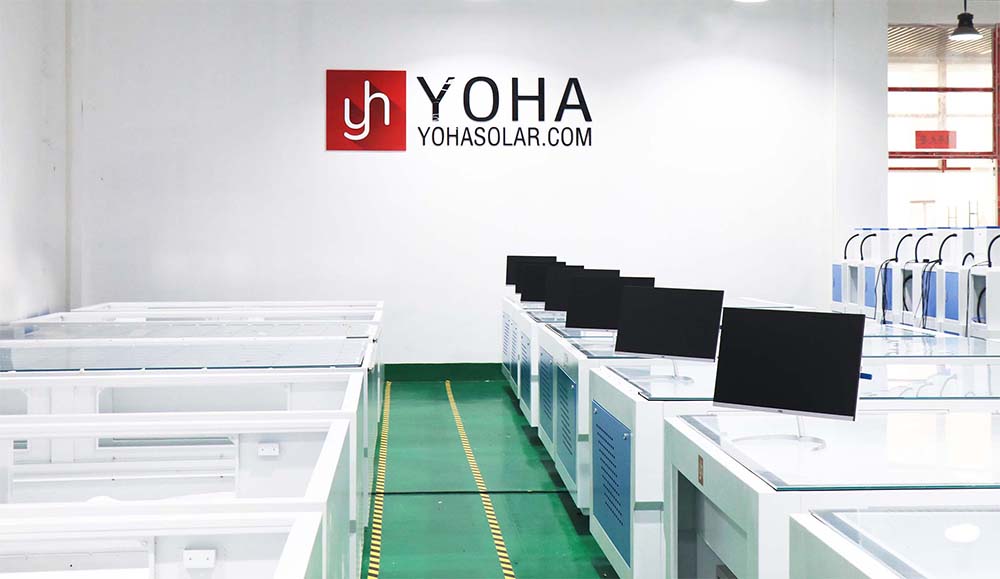Welcome to Wuhan Yoha Solar Technology Co., Ltd!
common problem
Site Map
Language:
 Chinese
Chinese
 English
English
Welcome to Wuhan Yoha Solar Technology Co., Ltd!
common problem
Site Map
Language:
 Chinese
Chinese
 English
English
While the manufacturing of solar cells represents the technological core of solar panel production, the key factor determining whether the panel can generate electricity stably for 25 years or more in harsh natural environments lies in the photovoltaic module encapsulation stage. If the solar cells are the "heart" of the module, then the encapsulation process is the custom-fitted "armor" protecting it. The ultimate value realization of the solar panel production process relies heavily on the sophistication and reliability of the encapsulation process.
Photovoltaic module encapsulation is not mere physical assembly; it is a systematic engineering endeavor integrating materials science, precision engineering, and long-term reliability validation. It fulfills multiple critical missions:
Physical Protection: Withstand weathering elements (wind, frost, rain, snow), hail impact, mechanical loads (e.g., snow, strong wind), and vibrations during transportation and installation.
Environmental Isolation: Create a hermetic "sealed chamber" to completely block moisture ingress and corrosive gases (e.g., salt spray, SO₂), preventing oxidation, corrosion of cells/metal interconnects, and Potential Induced Degradation (PID).
Electrical Safety: Ensure the safe conduction of internal high-voltage current, providing a robust insulating barrier to prevent leakage currents and electric shock hazards.
Optical Optimization: Maximize light transmittance, minimize optical losses, and ensure long-term optical stability under various lighting conditions.
Thermal Management: Facilitate heat dissipation during operation, maintain reasonable operating temperatures, and mitigate performance degradation.
Within the solar panel production process, the core steps of photovoltaic module encapsulation are tightly interlinked, demanding extremely high precision:

1. Precision Soldering and String Interconnection
The encapsulation process begins with connecting individual solar cells. High-precision soldering equipment (e.g., automated stringers) uses tinned copper ribbons (interconnect ribbons) to solder sorted cells with consistent performance into strings according to the design (typically 6, 9, or 12 cells per string). Precise control of soldering temperature, pressure, and time is critical to achieve low-resistance, high-strength ohmic contacts while avoiding micro-cracks induced by thermal stress. Subsequently, multiple strings are arranged in parallel using busbars according to the module's designed power, voltage, and current characteristics (e.g., 60-cell, 72-cell, half-cut, or shingled designs), and laid flat onto ultra-clear, high-transmittance photovoltaic glass. This glass serves not only as the load-bearing substrate; its low iron content and high transmittance (typically >91.5%) are vital for maximizing light capture.
2. Layup of Critical Materials
Key encapsulation materials are layered sequentially over the arranged cell strings:
Top EVA Sheet: Covers the cell strings. Ethylene-Vinyl Acetate (EVA) copolymer melts, flows, and crosslinks/cures during lamination, acting as the core adhesive bonding the glass, cells, and backsheet. Its light transmittance, crosslinking degree (typically required >75%), UV resistance, and anti-PID properties directly impact the module's long-term reliability. High-quality EVA effectively buffers stress and inhibits moisture permeation.
High-Performance Backsheet: Located at the bottom. Mainstream structures are fluoropolymer-based backsheets (e.g., TPT, KPK structures: Tedlar® PVF/PET/Tedlar® PVF or PVDF-based backsheets), providing exceptional weather resistance, insulation, and moisture barrier properties (low Water Vapor Transmission Rate - WVTR). Glass-glass modules use another layer of glass instead of a traditional backsheet, offering superior weather resistance and PID resistance, albeit with increased weight.
3. Lamination: The Core Process Crafting the "Sealed Chamber"
The layered stack is fed into a laminator for the most critical thermo-compression step in PV module encapsulation. The process is meticulously controlled:
Vacuum: Removes air trapped between layers to prevent bubble formation leading to delamination or localized hot spots.
Heating & Pressurization: Under precisely controlled temperature (~140-150°C) and pressure, the EVA melts and flows thoroughly, encapsulating and wetting the cells and ribbons.
Crosslinking & Curing: The EVA undergoes crosslinking under heat, transforming from a thermoplastic into a thermoset elastomer, forming a tough, transparent, and highly adhesive seal. The precise setting of the entire lamination cycle's time, temperature, and pressure profile is paramount to ensure uniform encapsulation quality, free of bubbles, delamination, or propagation of cell micro-cracks.
4. Framing and Junction Box Installation: Providing Strength and Interface
Frame Mounting: After the laminate cools, its edges are fitted with anodized aluminum alloy frames. The frame is securely bonded to the laminate using specialized corner brackets and silicone structural adhesive (or double-sided tape). The frame provides crucial mechanical strength, facilitates mounting on racking systems, and protects the laminate edges from physical damage and moisture ingress.
Junction Box Installation & Wiring: A waterproof, UV-resistant junction box is mounted at the designated location on the module's rear side. The box typically houses bypass diodes (to prevent hot-spot effects). The module's internal string leads (positive and negative busbars, usually tinned copper ribbons) are fed through pre-punched holes in the backsheet into the junction box, where they are securely soldered or plugged onto the box's terminals. The junction box is the module's electrical output interface; its sealing integrity, heat dissipation capability, diode quality, and connection reliability are critical for system safety and power generation efficiency. Silicone sealant is finally applied to rigorously seal the wire entry points and junction box perimeter.
5. Final Inspection: The Gatekeeper of Quality and Performance
Encapsulated modules must pass a series of stringent tests before leaving the factory:
Visual Inspection: Manual or AI-powered vision systems detect surface stains, scratches, bubbles, foreign objects, broken cells, ribbon misalignment, frame damage, etc.
Electroluminescence (EL) Imaging: Applying current to the module causes the cells to emit light (electroluminescence), captured by an infrared camera. EL imaging clearly reveals internal defects invisible to the naked eye: cell micro-cracks, broken fingers, fragments, poor solder joints, black cores, sintering defects, material contamination, etc. This is the core inspection method for assessing encapsulation process quality (especially soldering and lamination).
IV Performance Testing: Under Standard Test Conditions (STC: 1000 W/m², AM1.5 spectrum, 25°C cell temperature), core electrical parameters are measured: Maximum Power Output (Pmax), Open-Circuit Voltage (Voc), Short-Circuit Current (Isc), Fill Factor (FF). This determines the module's power rating and labels its nameplate, validating the final outcome of the entire solar panel production process.
Insulation & Hi-Pot (High-Potential) Testing: High voltage is applied between the module's circuit and its frame/ground. Tests verify insulation resistance meets safety standards (typically >40 MΩ) and the ability to withstand high voltage without breakdown for a specified duration (e.g., >3000 V DC for 1 minute), ensuring operational safety.
Wet Leakage Current Test: Simulates wet conditions to verify the module's insulation safety during rain or high humidity.
The solar panel production process concludes with the encapsulation stage, but this marks the beginning of the module's long service life. The level of encapsulation craftsmanship directly determines whether this "green energy panel" can deliver clean electricity consistently, reliably, and safely in complex environments – be it rooftops, deserts, oceans, or even space. With the adoption of new technologies like glass-glass modules, transparent backsheets, shingled cells, multi-busbar (MBB), and busbar-less (0BB) designs, encapsulation materials and processes are continuously innovating and evolving, enhancing module power density, reliability, and lifespan. Deeply understanding and relentlessly refining the encapsulation process is the solid guarantee for the photovoltaic industry to fulfill its promises of "continuously declining Levelized Cost of Energy (LCOE)" and "high reliability throughout the entire lifecycle."
keywords:TOP
18086473422
MESSAGE
